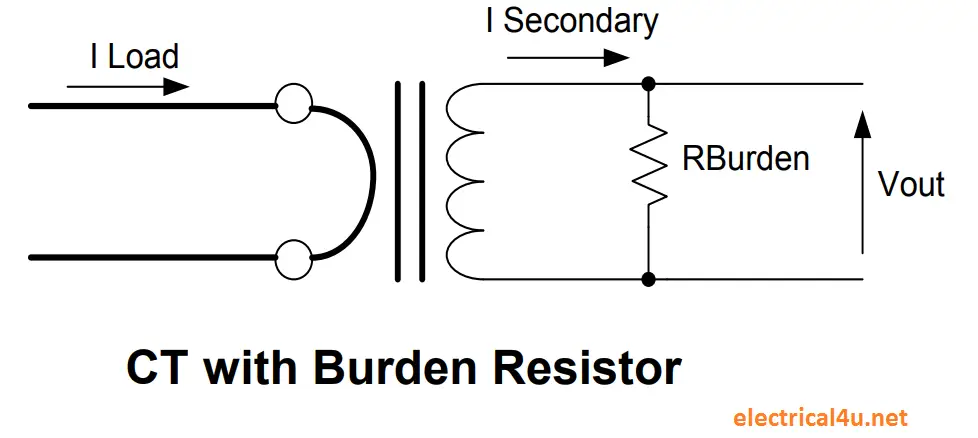CT Burden Resistor Calculator:
Enter the primary rated current, rated CT secondary voltage and turns ratio. Then click outside to calculate the burden resistor and total power consumption in watts.
CT Primary Current Calculator With Known burden Resistor:
Enter the burden resistance, rated CT secondary voltage and turns ratio. Then click outside to calculate the rated current in Amps and total power consumption in watts.
What is Burden resistor:
CT burden resistor is the resistor which will be connected across the current transformer terminal S1 and S2. The main purpose of the burden resistor is to protect the current transformer under open conditions. As we have seen earlier current transformer’ secondary should be always in a closed circuit to avoid extreme voltage built up in the second terminal.
At some instants such as loose connection, soldering failure, cable failure etc. during that time, the CT terminal will be opened and the high voltage will be built across the CT secondary terminal. The high voltage damages the insulation of the current transformer.
Why burden resistor is required?
To avoid such damaging insulation/current transformer the burden resistors are used.
Under normal condition it works as a dummy resistor, there is no current through the resistor.
During abnormal condition (secondary open condition), the high voltage will be applied across the resistor; hence current flows through the resistor. Since the CT insulation failure can be avoided by using the burden resistor.
At the same time, the burden resistor will increase the voltage across the CT terminal. we should choose the resistor value carefully, since increasing the resistor value increases the voltage across the CT. This relation seems like ohms’ law, is not it? and it is used to calculate burden resistance value for an optimum current-to-voltage relationship. At the same time, by reducing burden resistance causes a reduction in the CT’s secondary output voltage.

Since any CT secondary terminal must be connected with the burden resistor at all times irrespective of the primary current flows.
Let us consider,
I(p) = Primary Current in Amps
I(s) = Secondary current in Amps
N = Turns ratio in Numbers
The CT secondary current is equal to
I(s) in Amps = I(p) / N
Let us take a simple example, a CT with a turns ratio of 100:1 and the secondary current I(s) in Amps is equal to 1/100 of the primary current I(P) in Amps.
I(s) = I(P) / 100
Let we calculate the burden resistor value,
Look at the figure and apply Ohm’s law,
𝑉𝑜𝑢𝑡 = Output Voltage across the burden resistor in volts
RBurden = Burden resistance in ohms
Is = Secondary Current flow
Ip = Primary Current flow
N is the Turns ratio,
Hence,
𝑉𝑜𝑢𝑡 = Ip x RBurden / N
Hence burden resistance will be
RBurden = Vout * N / Ip
The burden resistance in ohms is equal to turns ratio times of the output voltage in volts divided by the primary current in Amps
Above formula is used to calculate the burden resistor value and if you Increase the burden resistor value, the output becomes non-linear. The selection should be done based in the manufactured recommendation.


